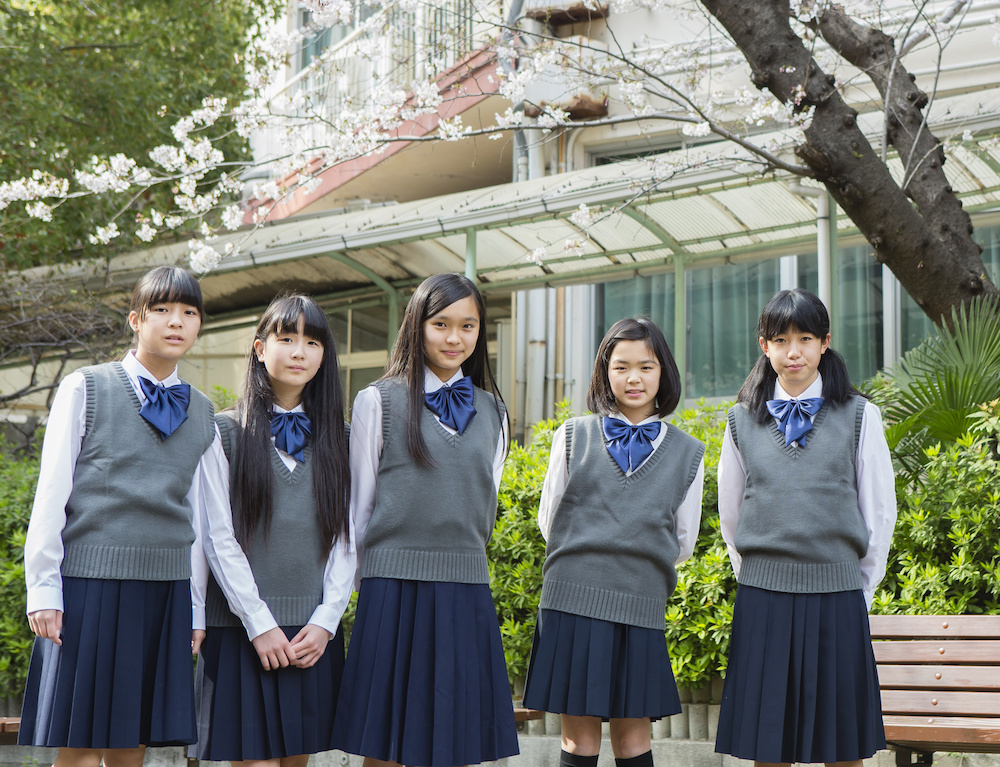A textbook case of ‘moral education’ in Japan

Neighbouring countries monitor changes to Japan’s education system with keen interest. The content of Japanese textbooks, in particular, has a long history of controversy.
In Japan, public schools cannot choose their textbooks freely. Instead, the Ministry of Education, Culture, Sports, Science and Technology (MEXT) oversees a “school textbook authorisation system”, Kyoukasho Kentei Seido. Publishers must prepare draft textbooks that meet curriculum guidelines – Gakushuu Shidou Youryou – provided by the ministry.
The MEXT and the authorisation committee check and evaluate submitted drafts before any are officially approved. Only then may each public school “choose” from the approved textbooks.
According to the MEXT, this system:
… guarantees Japanese citizens’ substantive rights to education, maintains and enhances the quality of basic education in Japan and ensures educational neutrality.
However, Japan’s authorisation system is frequently the target of formal protests by China and South Korea. Their major concern is that it allows the government to choose only “acceptable” information by obscuring subject matter deemed “inappropriate”.
[pro_ad_display_adzone id=”6125″ align=”left” padding=”3″]In 2005, for example, protests erupted over an approved textbook prepared by the Japanese Society for History Textbook Reform. The foreign critics argued that the book whitewashed Japan’s wartime record. It referred, only in a footnote, to the 1937-38 Nanking Massacre as an “incident”, and glossed over the issue of comfort women altogether.
Even today, textbooks’ descriptions of territorial issues between Japan, China and Korea are a source of many heated disputes.

Towards a more ‘deliberative’ learning model
Recent moves in the official direction of Japanese moral education have shone a new spotlight on the failings of this authorisation system. Earlier this year, the government announced a shift from a lecture-based model to deliberation-based moral education during compulsory schooling.
On paper, the goal was laudable. According to the MEXT, the change would enable students to cultivate moral judgements anchored in critical thinking and a tolerance of diversity.
In response, eight Japanese publishers submitted 24 drafts to the MEXT. It soon became clear that the evaluation criteria still reflected government-endorsed moral frameworks.
A bakery becomes ‘inappropriate’ content
The following example is telling.
During a walk around his city, a boy has a chat with the staff in a greengrocer and buys bread from a bakery. This experience raises his interest in the city where he lives.
The simple, mundane story was written in accordance with the curriculum guidelines. These require textbooks to cultivate a respect for tradition, along with a love for Japan and local culture. Despite this, the authorisation committee deemed the content “inappropriate”. Why? Because it was set in a bakery.
The bakery originally derives from Europe, so the committee thought it “inappropriate” as a setting for students to “deliberate” on Japanese culture. The publisher replaced the bakery with the much more appropriate wagashiya (a traditional Japanese confectionery store). The textbook was then approved.
The problem with this seemingly minor change is that bakeries are an important and prominent part of Japanese culture today. Hence, identifying a bakery as an “inappropriate” aspect of Japanese culture is problematic in two senses.
On the one hand, it promotes a distorted interpretation of Japanese culture. It also discriminates against specific occupations like bakers by stigmatising them as unworthy of inclusion in the Japanese moral community. This has broader ramifications: quite often it is not just bakers but the concerns of other countries that are excluded from this tightly vetted community.

Three core problems with the system
In total, the authorisation committee offered 244 “instructions” of a similar variety across the 24 submitted drafts to enforce compliance with the curriculum guidelines. These amendments revealed three core issues with Japan’s moral education system.
1) Disregard for the publisher’s autonomy
Even if a publisher decides to use their ingenuity in preparing a textbook, it is safe to say that governmental instruction will work against, and quite often disregard, such efforts.
Publishers are more or less required to follow the will and the plan of the authorisation committee. The eventual result will be a one-size-fits-all textbook containing “appropriate” content.
2) Imposition of the government’s “ideal” moral frameworks
The authorisation system strengthens and prioritises the moral framework set by the government.
Consider this example. The two-parent family is not as common as it once was. Modern family configurations include single mother/father families, parentless families, same-sex-married families, and so forth.
However the curriculum guidelines explicitly argue that:
… students should respect both father and mother, and both grandmother and grandfather.
In presupposing a single concept of family by ignoring all other sorts, the curriculum justifies a tokenistic approach to moral education. Students are still forced to think and deliberate only within officially sanctioned confines.
3) Pre-empting any critical thinking
Japanese moral education policy and the textbook authorisation system are strange bedfellows in the first place. Despite the government proposing deliberation-based moral education, the authorisation system one-sidedly offers a single “answer” that pre-empts any actual deliberation in the classroom.
Is there really space, then, for the students to appreciate diversity, think critically and challenge taken-for-granted norms and values?
Nationalistic or deliberative citizens?
Even in kindergarten the lines between government will and public morality are being blurred.
Tsukamoto kindergarten, for example, pushes pre-war virtues and teaches the Imperial Rescript on Education – Kyouiku Chokugo – which values self-sacrifice for the emperor. The kindergarten requires pupils to bow in front of images of the imperial family several times a day.
Only recently has this caused controversy when Prime Minister Shinzō Abe and his wife praised this particular school. The “bakery versus wagashiya” case, then, can be seen as yet another instance of government-enforced nationalism being prioritised in the moral education system.
So, while authorities question whether students can learn morality through the story of a bakery, it is perhaps more important to consider what kind of citizens the government aims to cultivate through its moral education system.
The curriculum guidelines encourage, at least on paper, deliberative citizens to think critically and to appreciate diversity. But how can students grow into deliberators if morality is regulated as an extension of government-prescribed nationalism?
If the Japanese government truly wishes to foster deliberation among its young pupils, it must first make the textbook authorisation process more deliberative – as in reflective, inclusive and accountable to citizens.
Students have the right to express their views freely in all matters affecting them. As stated in the United Nations Convention on the Rights of the Child (Article 12), children should be given opportunities to be heard in decision-making processes.
To this end, there should be public hearings about the contents of authorised textbooks and pathways through which students can express their opinions. This might allow Japanese moral education to become more deliberative and more democratic.
![]() This article was written by Kei Nishiyama, PhD Student, Centre for Deliberative Democracy and Global Governance, University of Canberra. Originally published on The Conversation.
This article was written by Kei Nishiyama, PhD Student, Centre for Deliberative Democracy and Global Governance, University of Canberra. Originally published on The Conversation.







